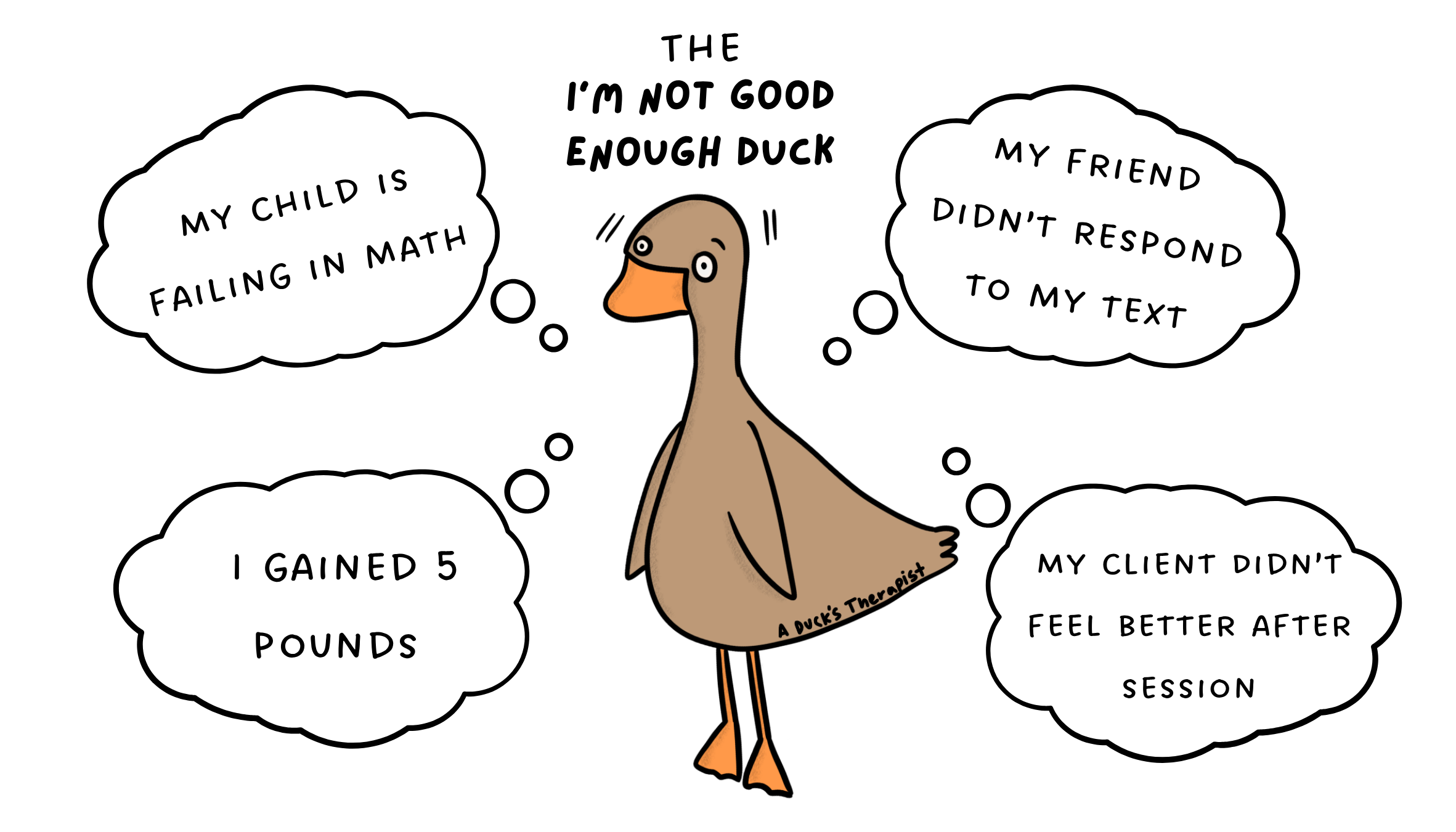I’m Not Good Enough: A Negative Core Belief (Pt. 1)
Yesterday, I sent a text to a new friend. A simple, friendly text. Three hours later, I caught myself checking my phone for the fifth time, that familiar tightness creeping into my chest. Why haven't they responded?
And then the spiral started, the way it always does:
If they haven't responded, maybe I said something weird.
And if I said something weird, maybe I came on too strong—or maybe I was too boring.
And if I came on too strong, they probably think I'm awkward or too much.
And if they think I'm too much, they probably don't actually want to be friends.
And if they don't want to be friends... then I must not be likable enough.
And if I’m not likable enough…I’m not good enough.
There it was. In less than 10 seconds, my brain had traveled from "unanswered text" to "I'm fundamentally inadequate as a person."
And then I stopped. I recognized what was happening.
It wasn't really about the text.
It was about the underlying belief and biggest fear: "I'm not good enough."
If this resonates with you—if you've ever felt that low hum of anxiety that seems to attach itself to everything—chances are, there's a negative core belief operating beneath the surface that you didn't even know was there.
What Are Negative Core Beliefs?
Core beliefs are the fundamental truths we hold about ourselves, formed in childhood and carried into adulthood. They're like the foundation of a house—invisible once the walls go up, but influencing the entire structure.
These beliefs run automatically, below conscious awareness. You don't wake up and think, "Today I believe I'm not good enough." Instead, it shows up as:
Anxiety when your phone rings
Overexplaining yourself in conversations
Difficulty accepting compliments
Exhaustion from trying to prove yourself
A knot in your stomach when someone says, "Can we talk?"
The inability to rest without guilt
When you carry this belief, the world becomes full of evidence confirming it. Not because it's true, but because your mind is scanning for proof.
The Downward Arrow: Uncovering What's Really There
Trace your anxious thoughts down to the core belief underneath.
Here's how it works. You take a worry or anxious thought and keep asking: "What would that mean about me?" or "What would be so bad about that?"
Example:
Surface thought: "I'm anxious about the parent-teacher conference next week."
↓ Ask: What would be so bad about the conference?
"They might tell me my child is struggling."
↓ Ask: And if they are struggling, what would that mean?
"It means I'm not doing enough at home to support them."
↓ Ask: And what would that mean about you?
"It means I'm failing as a parent."
↓ Ask: And what does failing as a parent mean about you?
Core belief: "I'm not good enough."
This Week:
1. Notice those moments
Pay attention to when you feel a spike of anxiety, guilt, shame, or that familiar tightness in your chest. These are clues that a core belief might be activated.
2. Write it down
Keep a simple list—in your phone notes, a journal, wherever works for you. You don't need to write a novel. Just jot down:
The situation (e.g., text not answered, feedback at work, kid's meltdown)
The feeling (anxious, guilty, ashamed, panicked)
The thought that came up
3. Try the downward arrow
Pick 2-3 moments from your week and walk yourself through the questions:
What would be so bad about that?
What would that mean?
What's the worst part about it if that were true?
What would that mean about me?
Some people find it helpful to track:
What situations most often trigger the belief (relationships? work? parenting? rest?)
What time of day is it loudest (morning? evening? Sunday nights?)
Who you're with when it shows up most
There's no wrong way to do this, so do what feels most natural and track your progress.

